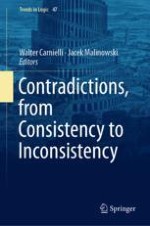2018 | OriginalPaper | Buchkapitel
A Local-Global Principle for the Real Continuum
verfasst von : Olivier Rioul, José Carlos Magossi
Erschienen in: Contradictions, from Consistency to Inconsistency
Aktivieren Sie unsere intelligente Suche, um passende Fachinhalte oder Patente zu finden.
Wählen Sie Textabschnitte aus um mit Künstlicher Intelligenz passenden Patente zu finden. powered by
Markieren Sie Textabschnitte, um KI-gestützt weitere passende Inhalte zu finden. powered by
